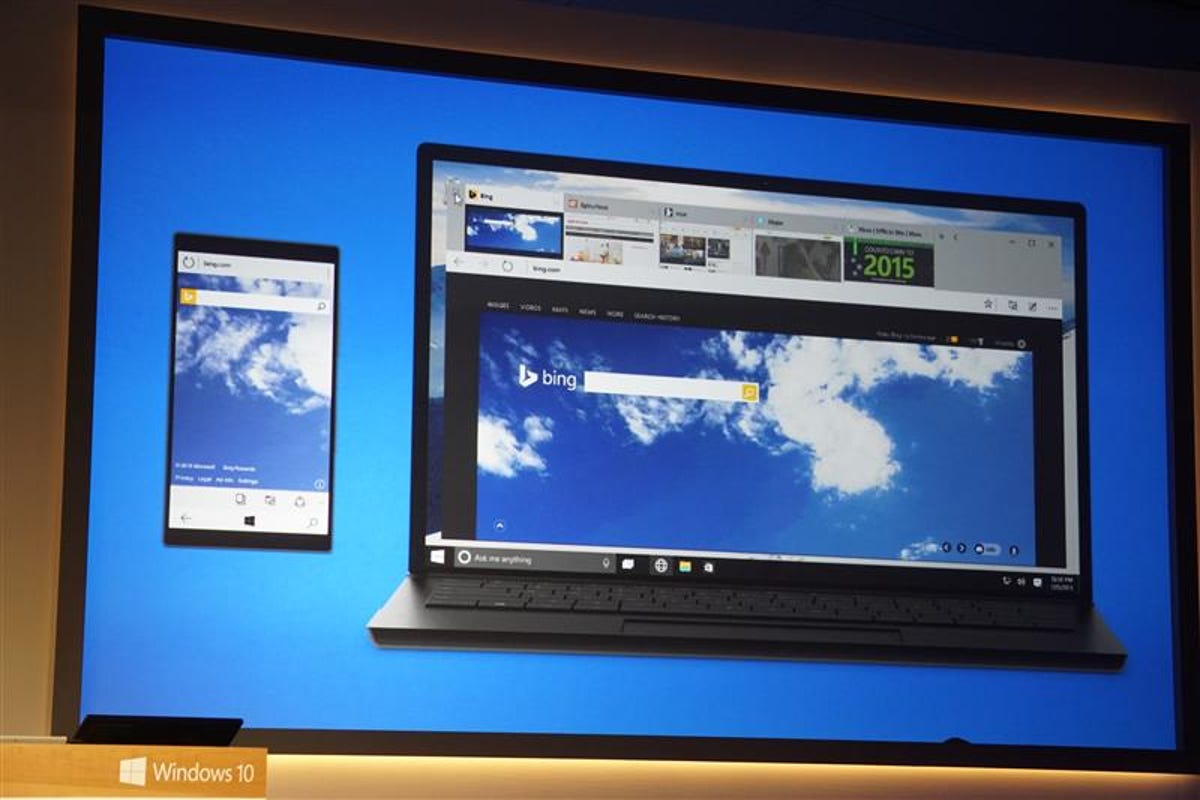

Now playing:
Watch this:
Microsoft unveils new browser Project Spartan
1:07
Never mind that Microsoft’s Internet Explorer has far more consumers using it than Google’s Chrome. Microsoft’s got a new browser, and it’s gunning for Google.
Microsoft officially introduced its next-generation browser, code-named Project Spartan , at its coming-out party for Windows 10 in Redmond, Wash., on Wednesday. The software giant has struggled to escape its legacy as the chief embodiment of a bygone era of PCs, and Windows 10 marks its biggest step yet toward a simpler, more modern “one Windows” vision meant to tie together desktops, laptops, tablets and smartphones.

Nate Ralph/CNET
The software giant also wants to create a single browsing experience across its Windows devices.
“Since we have this rapid evolution on the Web… we think it’s the right time to build a new browser,” said Joe Belfiore, who runs Microsoft’s operating systems group.
Microsoft has reason to redouble its efforts with browsers: They remain a vital way for people to interact with the Internet — to watch videos, update their Facebook timelines, or go shopping. While apps have become one of the primary ways people interact with a smartphone, the browser is still a key technology for desktop and laptop computers.
Microsoft is hoping to blur the line between desktop and mobile, in part as a way to encourage users to interact with their browser more often on a mobile device. Mobile users spend only 14 percent of their time, or 22 minutes a day, using their browsers, according to research last year from mobile analytics firm Flurry.
On Apple’s devices, the problem is less pronounced. Flurry found those customers spend more time in their browsers than those who own devices powered by Google’s Android or Microsoft’s Windows.
Microsoft wants that to change.
Related stories
- Windows 10: Complete coverage
- Windows 10: Hands-on with Microsoft’s new OS
- Here’s what we want to see from Windows 10 on Wednesday
- First take: Project Spartan
Long the world’s top browser maker, Microsoft still wants people to use Internet Explorer 10 and 11, which grew out of the PC era. But a newer, more lightweight browser would eliminate the need to redesign IE to work across multiple devices.
It might also encourage customers to use a browser on their device more often.
Microsoft is not alone among browser makers in trying to adapt to a new way of life. Firefox maker Mozilla — whose mission a decade ago was to disrupt IE’s dominance — now is focused on the challenges posed by the iOS and Android mobile operating systems.
The company has had some success in revamping IE and stemming its decline. After claiming less than 53 percent of the global browser market in January 2012, IE has climbed back to more than 59 percent of users in December 2014, according to Web traffic analysis from NetMarketShare. But the competition is tough. The second-most popular browser, Google Chrome, hit an all-time high of 22 percent of the global desktop market in December.
Meanwhile, Web traffic tracker StatCounter found that Internet Explorer has been taking it on the chin from Chrome. Its global numbers as of December 2014 showed Chrome with 46 percent of the desktop, console and tablet worldwide browser market, and Internet Explorer in second with 22 percent.
Google has not been sitting still with Chrome. In August, for instance, it brought its browser into the realm of 64-bit software, with the promise of greater speed and security.
Spartan could help Microsoft break free from IE’s legacy. The browser will rely come with a real-time Web page annotation feature, integration of the voice-powered Cortana digital assistant, built-in PDF support, a built-in reading mode and a reading list.
Belfiore didn’t detail Microsoft’s plans for its new browser project. It’s not clear whether Spartan will replace Internet Explorer, or run alongside it. It’s also not clear at this point whether Spartan is running on an updated or next-generation version of Internet Explorer’s Trident rendering engine, or something completely different.
Spartan will be available first to early testers running Windows 10 Insider versions, and then to Windows Phones.
For real-time updates on Microsoft’s Windows 10 event, follow the CNET live blog. And check out our full coverage of today’s Windows 10 news.
Updated at 11:15 a.m. with additional details.




